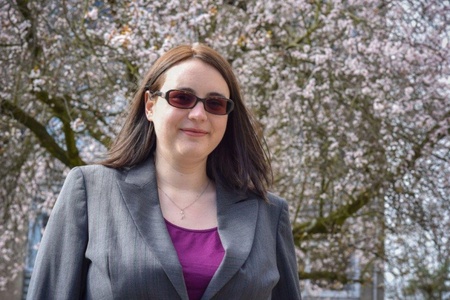This blog was first published by Scottish Legal News, and the original can be viewed here
Dr Robert Brett Taylor and Dr Adelyn L M Wilson summarise a judicial review case, currently at avizandum, challenging the lawfulness of a decision to allow administration of abortion medication in the pregnant woman’s home.
Section 1(3) of the Abortion Act 1967 allowed the Secretary of State to approve individual places for the treatment of abortion; section 1(3A) of the 1967 Act, which was inserted by the Human Fertilisation and Embryology Act 1990, extended this approval to a “class of place”. This power of approval was devolved to the Scottish Ministers following the enactment of the Scotland Act 2016. On 26 October 2017, the Scottish ministers accordingly approved that the second dose of medication required in an early-stage medical or pharmaceutical abortion could be taken in the pregnant woman’s home. The following day, the Chief Medical Officer issued a letter informing medical personnel of this approval and providing them with guidance written by the Scottish Abortion Care Providers Network on how that approval should be implemented in practice.
The present case concerns a judicial review action brought by the Society for the Protection of Unborn Children (SPUC) challenging the lawfulness of the approval. The permission stage was completed in March 2018, and the hearing of the petition in the Outer House of the Court of Session took place on 14 and 15 May 2018 before Lady Wise. Although it was accepted by both parties that the dispute could be settled on legal rather factual argument, the possibility of a factual hearing was left to the discretion of the judge. The case is now at avizandum awaiting Lady Wise’s judgement. The following is a summary of the principal arguments of both petitioners and respondents on the points at issue.
The first point at issue was whether “the home of a pregnant woman” meets the requirements of a “class of place” under section 1(3A) of the 1967 Act as amended. The second was whether the treatment process envisaged by the approval and accompanying guidance meets the definition of “termination by a registered medical practitioner” under section 1(1) of that Act. Underlying these two arguments was a disagreement between the parties on the appropriate method of statutory interpretation. The petitioners commended to the court what they regarded as a precise and technical approach to statutory interpretation by Lady Hale in the previous abortion case of Doogan and another v Greater Glasgow and Clyde Health Board [2014] UKSC 68. The respondents instead advocated for a “holistic view” of the legislation, which focused on the “mischief” which the Abortion Act had sought to remedy and the purpose of the 1990 amendment.
Home as class of place
The petitioners first claimed that any class of place would be restricted in form or substance by the terms and purpose of the 1967 Act. They identified this as having been to provide abortions in safe and hygienic places, as per Lord Diplock in Royal College of Nursing of the United Kingdom v the Department of Health and Social Security [1981] AC 800. They claimed that, for the class to be competent, all homes of pregnant women would thereby have to be safe and hygienic. However all pregnant women’s homes were not necessarily safe and hygienic and could not be assumed to be so by virtue only of their connection to a pregnant woman. Therefore the approval had failed to meet the requirement of being consistent with the terms and purpose of the 1967 Act. Additionally, this proposed class of places was too broad in and of itself. Therefore the decision-making power was in effect being delegated to the medical profession, which would have to decide whether a particular home was safe, as required by the Act and as interpreted by Lord Diplock, on a case-by-case basis. This further delegation, they argued, was not competent under the Act as the obligation is on Ministers (not doctors) to identify safe places.
However, the respondents suggested that the interpretation of sections 1(3) and 1(3A) should be in keeping with the purpose of the Acts. They provided judicial and parliamentary evidence to show that the mischief which precipitated the 1967 Act was the prevalence of backstreet abortions and exploitation for commercial gain of vulnerable pregnant women. The policy for curing that mischief, they stated, was the bringing of abortion into the public sector (at that time including NHS hospitals) and places controlled by the state. They additionally identified the purpose of the 1990 amendment as being to allow the law to keep pace with medical advancement. Therefore, they argued that what was anticipated were permissive sections which gave broad statutory powers to identify places and classes of places which were suitable for abortion. They claimed that this test of suitability included consideration of wider factors such as privacy and comfort and disagreed that safety and hygiene were overriding factors. They suggested that the petitioners were over-emphasising Lord Diplock’s words on safety and hygiene, warning that these words should not be read as a test which set forth conditions for the future exercise of approval powers. Rather, they argued that, beyond administrative law restrictions of reasonableness, there were no restrictions on the exercise of executive power under section 1(3A). They also noted that it had been acknowledged in passing that a home might in the future “potentially” constitute a class of place under section 1(3A) in British Pregnancy Advisory Service v Secretary of State for Health [2011] EWHC 235 (Admin). With respect to the petitioner’s arguments, they submitted that homes can be assumed to be safe but then doctors can determine whether that is correct in individual circumstance in accordance with normal and appropriate medical practice.
Treatment by a Registered Medical Practitioner
The petitioners argued that the treatment at home does not meet the requirements of section 1(1) as being treatment “by a registered medical practitioner”. They observed that the majority in the House of Lords in Royal College of Nursing had anticipated that treatment could include the activities by a treatment team, one which was hierarchical and in which the doctor held a “ministerial capacity”. However the petitioner argued that the test for that was “control”, and that this distinguished the doctor-patient relationship from that of the doctor-nurse relationship because the patient self-administering the treatment is not controlled by the doctor. The petitioner also suggested that the presence of the doctor was required in a meaningful sense, and that “virtual” presence at the end of a phone was not sufficient but rather that greater proximity to the patient is required. They said that the majority’s interpretation of the treatment team remains relevant because Westminster in the 1990 Act did not amend the relevant statutory phrase. They argued further that the identification of place should be connected to the provision of treatment and, by assumption, the availability of the treatment team.
The respondents acknowledged the remarks of the majority in that case with respect to the treatment team. However, they argued that there was no reason why the patient could not be interpreted as being part of that team. They also suggested that, even if the doctor could be assumed to remain on the premises of a hospital during the course of treatment, they might not be physically in the woman’s presence and might be available only by phone. This access to the doctor only by phone, they claimed, was no different to if the woman was undergoing treatment whilst in her own home. They further noted that a doctor would normally be considered to be treating and responsible for a patient to whom he had prescribed other medication; this broad interpretation of treatment and responsibility could be extended to the circumstance set out in the approval.
Final remarks
As indicated by this summary, the parties presented arguments of statutory interpretation rather than commenting more generally on legal or policy matters relating to the law of abortion. Although this case has raised significant issues in connection to the lawfulness of medical practice in Scotland, it also has wider implications for the rest of the UK. The Welsh Government have indicated that they may follow the example of the Scottish Government in allowing the second course of treatment for abortion to be taken at home. Meanwhile Lord O’Shaughnessy, Parliamentary Under-Secretary for the Department of Health and Social Care, indicated to the House of Lords that the British Government have no current plans to reform the law in England and Wales in this regard but is monitoring the outcome of this judicial review hearing.
Dr Robert Brett Taylor is a lecturer in law and Dr Adelyn L M Wilson is a senior lecturer in law at University of Aberdeen School of Law



